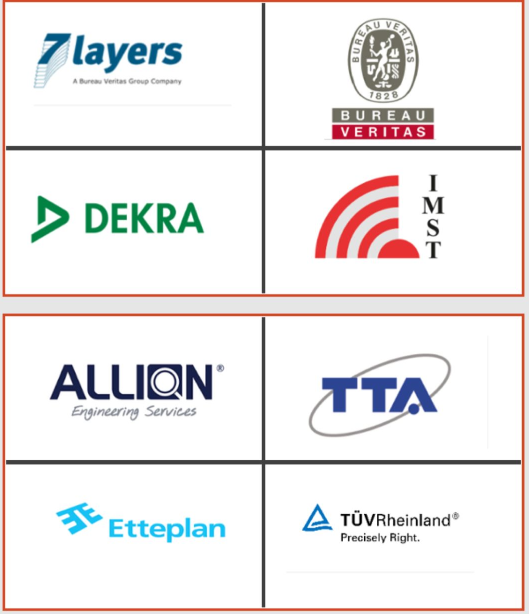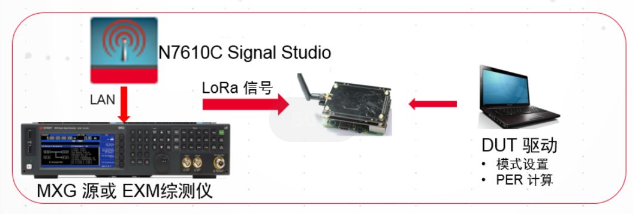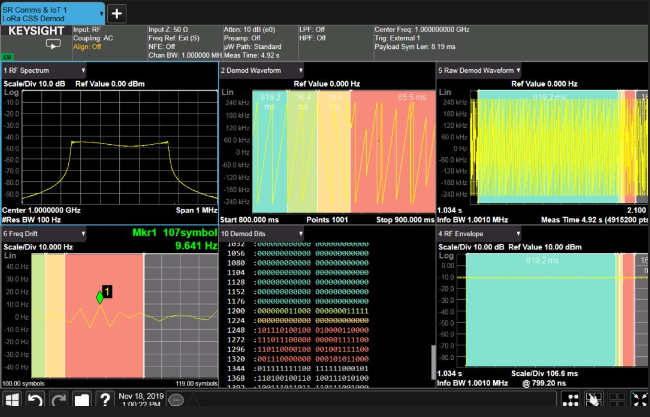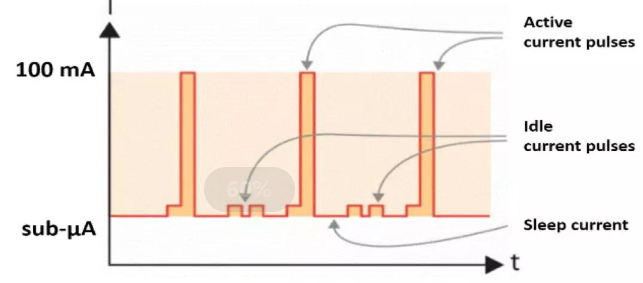Is Ali's LoRaWAN standard becoming China's LoRa wireless air interface standard?
2021-02-02
Is Ali's LoRaWAN standard becoming China's LoRa wireless air interface standard?
On November 1, the LoRa® Alliance announced that the LoRaWAN Chinese frequency band technical standard "LoRaWAN CN470 Spectrum Technical Standard" submitted by Alibaba, a member of the LoRaWAN Alliance Sponsor, was confirmed by voting and officially became the LoRa wireless air interface standard in China.

It can be said that the establishment of this standard has laid the foundation for the further rapid development of LoRa in China. Its main contributions are as follows:
· Make the LoRa technology of frequency band 470 deployed in China a technology recognized by the international alliance
· Solved the problem that the LoRa equipment of domestic manufacturers was independent, and the frequency bands were not unified, and the problem that they could not be interconnected
· The scheme design in the standard, especially the antenna design, effectively improves the spectrum efficiency and reduces the hardware cost
It should be pointed out that this standard was drafted by ZTE Carat in cooperation with Alibaba and submitted by Alibaba to the LoRaWAN Alliance. In any case, this shows that China's LoRa ecosystem is further developing and growing.
The unification of technical standards is conducive to the certification and testing of local LoRa products in China. On the LoRa Alliance website, a total of 148 products that have been certified and tested by the Alliance have been released so far. Due to the inconsistency of the original frequency bands, there are currently hundreds of LoRa ecosystem partners in China. Although the equipment has been used in various industries, it seems that there is no product that has been officially certified by the LoRa Alliance.
Who will do the LoRaWAN test certification of the product?
As we all know, as an Internet of Things technology, LoRa can use sensors and actuators designed for M2M and Internet of Things (IoT) applications to achieve low data rate and long-distance communication, and it can be applied to all aspects in various countries and regions. The LoRa Alliance™ is an open organization formed by a number of cooperative members. It has developed the low-power wide-area LPWA network protocol specification LoRaWAN®. The specification is based on LoRa technology and uses license-free sub-GHz frequency bands for communication.
So who does the certification test for LoRa products?
Of course, it is a testing organization (ATH-Authorized Test House) authorized by the LoRa Alliance. The process of applying for certification will not be introduced here too much. You can download the corresponding documents on the official website.
So which testing institutions are authorized by the LoRa Alliance?
So far, the LoRa Alliance has officially authorized about 8 testing institutions (some of which may have multiple Labs around the world), as shown in the figure below.

In Greater China, there is only one, and that is the TUV Rheinland Test Lab in Taiwan. Each manufacturer can contact each testing organization individually when submitting product certification, but the premise is that the manufacturer must be a member of the LoRa Alliance. No, you need to join the LoRa Alliance in advance.
Which products are mainly tested for LoRaWAN certification?
At present, LoRa certification testing is mainly for Class A terminal products (the difference between Class A, B, and C products is shown in the table below), and the certification plan for gateway products has not yet started.
Class A terminal products mainly include the following frequency bands: EU 863-870; EU 433; US 902-928; AU 915-928; KR 920-923; AS 923; CN 779-787; CN 470-510 (CN meter Chinese frequency band
Other areas without using the bands there is no certification program began, some still in development. The goal of all certification tests is to ensure that products from different manufacturers can be interconnected and work normally.

The certification test of LoRaWAN® is mainly to test the function of the terminal, that is to say, it is mainly whether the protocol and application of LoRaWAN are consistent with the regulations of LoRaWAN. The verification of radio frequency function is optional, such as transmit power, wireless receiving sensitivity, etc.
How to ensure that products pass the LoRa certification test?
As mentioned earlier, the certification of LoRaWan products is only a functional test, and the content of the RF test is only optional. But what we need to understand is that the characteristics of radio frequency are the prerequisite to ensure the normal function of the product. Therefore, if you want to successfully pass the certification test, you must first ensure that you pass the RF test first. Also, for CE or FCC certification, radio frequency testing is a must-test item.
High sensitivity test of receiver
Among all communication standards, LoRa technology has the highest receiving sensitivity.
When the commonly used SX1301 on the market is configured at 125kHz/SF12, it can reach -142.5dBm. It is much higher than NB-IoT (-130dBm) and LTE (-110dBm), which is one of the reasons why LoRa can be transmitted over long distances.
Under ideal conditions, that is, the same transmit power, antenna gain, and environmental factors, the communication distance of LoRa is 4 times that of NB-IoT; it is 42 times that of LTE. Not only that, the highest sensitivity of SX1268 and SX127x modules on the market can reach -148dbm.
Such high sensitivity puts forward higher requirements on the testing instrument. The signal source must be able to generate an accurate LoRa signal less than -148dBm to meet the requirements of system testing.

Keysight's MXG signal source N5182B is an economical signal source, its output can reach -144dBm, and has excellent phase noise characteristics, which can meet the general LoRa terminal test requirements.
For more demanding or higher sensitivity tests, you can use Keysight’s high-end vector signal source.
For R&D and design and verification tests, the industry is still considering adding other test requirements, including additive white Gaussian noise (AWGN) and signal attenuation conditions (such as frequency drift caused by local oscillator frequency or adjacent channel and co-channel interference). Error) to verify the performance of the receiver.
Optional different options, MXG signal source can easily meet these tests. The N7610C Signal Studio software for the Internet of Things is equipped with an intuitive graphical user interface that allows users to easily set parameters and use these parameters to control various configurations, thereby flexibly generating LoRa waveforms. The key parameters of LoRa signal configuration include spreading factor (SF), bandwidth, code rate and preamble length.
Various modulation parameter test of transmitter
The test of LoRa transmitter is mainly power correlation and demodulation test, including power, frequency error, occupied bandwidth and other test items. For example, the maximum power test is one of the launch tests that some operators value very much.

Keysight's spectrum analyzer, supplemented by the current Internet of Things test software option (N9084EM0E), can demodulate the signal transmitted by LoRa.

Using this software option, you can discover more information about the LoRa signal of the transmitter, such as the trace of the demodulated Chirp and the trace of the frequency offset relative to the signal (Symbol), which provides a very good design for the transmitter and the transmitting circuit. Debug tool.
Module or terminal low power consumption test
As we all know, LoRa is a low-power wide area network technology. LoRa's Class A terminal uses battery drive, so it has a special optimization mechanism for its power consumption. For R&D engineers, issues such as the choice of MCU, battery power management chip, circuit design, and power consumption of peripheral devices will affect the final power consumption performance of the LoRa terminal.
Similar to the different working states of NB-IoT, LoRa terminal also has several working states, sleep mode, idle mode (only MCU work), operation mode (including sending data mode and data monitoring or receiving mode), each state consumes The current is different.
For example, the module SX1278, its sleep current is less than 0.2 mA, the current is about 1.6 mA in idle mode, 12 mA in the receiving state, and 120 mA in the maximum transmit state. In different application modes, the duration of each state is also different. Therefore, even if it is the same terminal, the battery life is different in different application scenarios.

To accurately know the battery life time, it is necessary to accurately test the current consumption in various states. It is also possible to monitor the power consumption of a certain terminal under normal working conditions in a certain scene for a certain period of time (for example, 4 hours), so as to estimate the battery life.
Keysight’s X8712A, using the battery simulator function of the power supply plus the radio frequency monitoring function, can test current consumption as low as nA, correlate the radio frequency emission with the corresponding power consumption, and can do long-term work. Consumption records can accurately test the battery life of various IoT terminals, and can make various statistical analyses. It is the best choice for accurate power consumption testing.